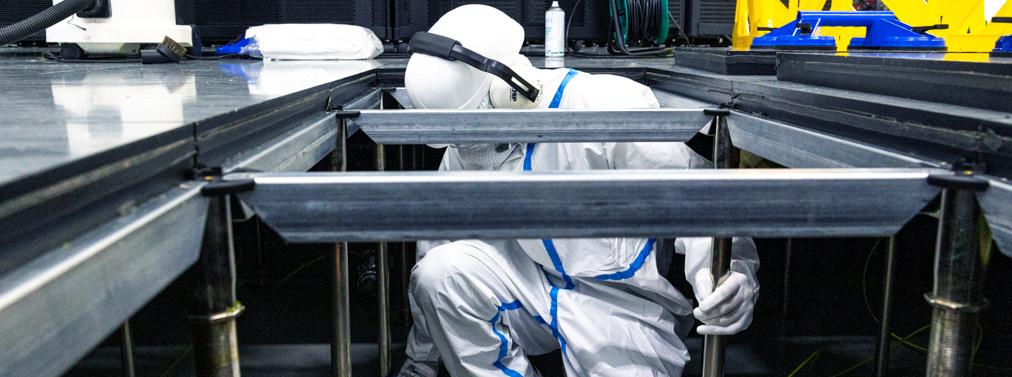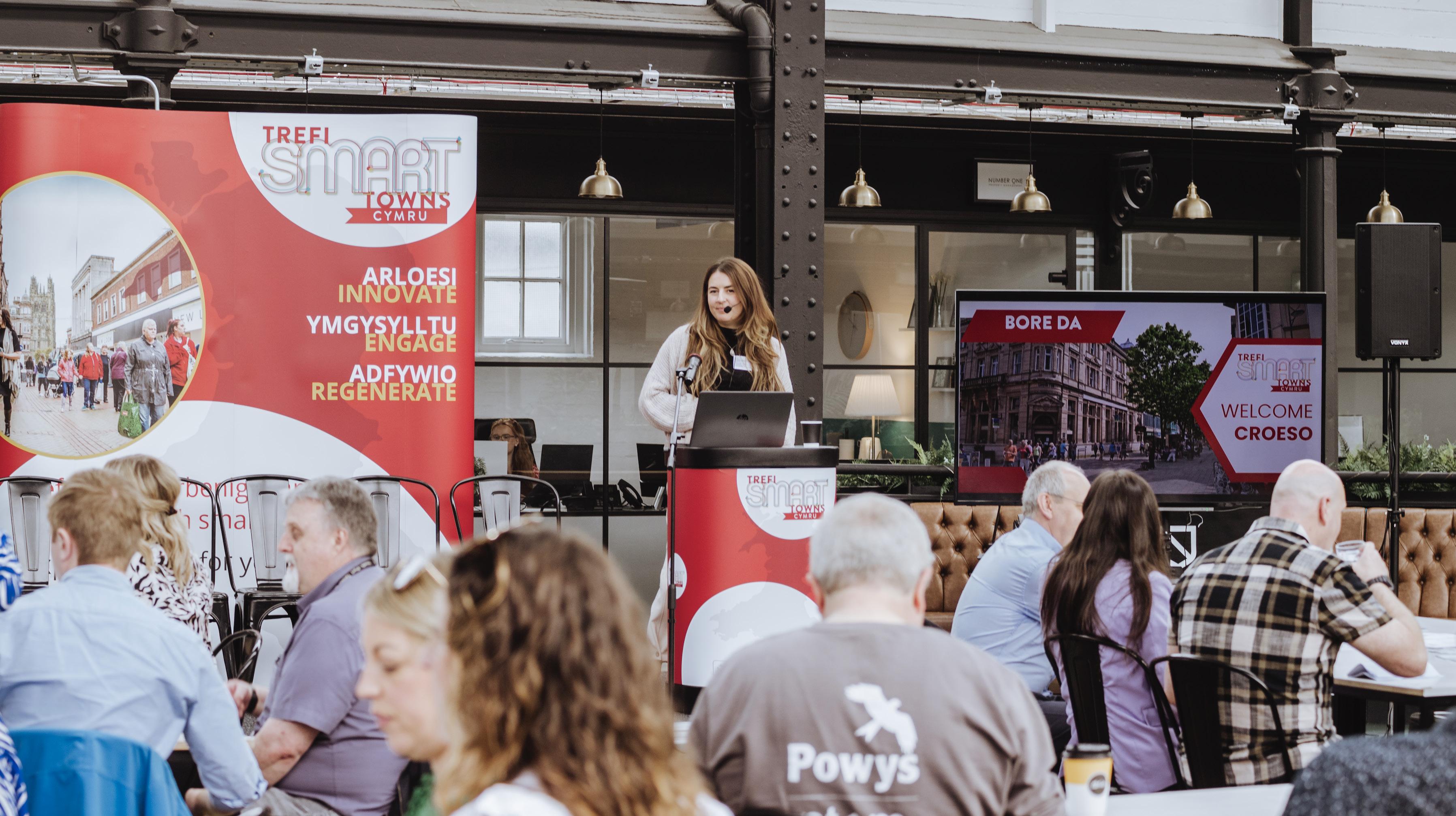











XMA in partnership with Microsoft Surface revolutionises government operations with AI-enhanced productivity and superior citizen services.
Microsoft Copilot: Your AI-Powered Assistant
Automate tasks, generate content, summarise documents, and gain insights with seamless Microsoft 365 integration.

Executive Briefings:
Gain insights on overcoming budget constraints and maintaining service quality.
Join our strategic discussions on the future of government IT.


Total Experience (TX) in Government
Enhance employee and customer experience with AI readiness, improved communication, and better citizen engagement.
Modernise Your IT Infrastructure
Secure transition to Windows 11 with our Readiness Assessment, expert analysis, risk mitigation, and phased rollout planning.
Ready to Transform Your Government Agency?
Schedule an executive briefing or Windows 11 Readiness Assessment
Contact us today at outcomes@xma.co.uk xma.co.uk




The new government is in place and it has already been announced that the Department for Science, Innovation and Technology (DSIT) will expand in size and scope, with a focus on the digital transformation of public services – great news for those already striving to make this a reality.




This issue of Government Technology includes a feature from Socitm on the topic of digital transformation, as well as other interesting articles from techUK on innovation and CCS on procurement.
Polly Jones, editor






techUK CEO, Julian David

In today’s rapidly evolving world, the impact of technology on individuals, society, and the economy cannot be underestimated. For the everyday Briton, technology seamlessly integrates into daily life. The convenience of online shopping, the efficiency of digital banking, and the accessibility of telehealth services enhance our quality of life, simplifying routine tasks and fostering connectivity.
The new UK Government will play a pivotal role in shaping the tech sector’s future. Policy decisions on digital infrastructure, innovation funding, and regulatory frameworks will determine the pace and direction of technological advancements. Supportive policies can accelerate growth, attract investment, and ensure that the UK remains at the forefront of the global tech landscape.
Embracing technology is not just an option; it is imperative. Digital innovation is unlocking a brighter, more connected, and prosperous future for the UK and its people. By positioning itself at the forefront of the global digital economy, the UK is securing a resilient and prosperous future. Government Technology will provide a space for insightful discussions at this pivotal moment for the country. We look forward to contributing to the conversation on behalf our members and showcase how technological advancements continue to shape a better future for the UK and our public services.


The Department for Science, Innovation and Technology (DSIT) has announced they will expand in both scope and size bringing in experts in data, digital and AI.
This will be from the Government Digital Service (GDS), Central Digital and Data Office (CDDO), and Incubator for AI (i.AI).
DSIT said this will unite efforts in the digital transformation of public services under one department.
The move will drive forward the digital changes needed to overhaul the British public’s experience of interacting with the government, so it becomes personalised, convenient, and timesaving – for example, by providing people with just one way to login and prove who they are so they can quickly access the government services they need. It will also help remove roadblocks to sharing data across the public sector.
This will form part of wider efforts to launch DSIT as the digital centre of government, working closely with the Cabinet Office and the Treasury, to maximise the potential of digital, data and technology to deliver for the British public.
Secretary of state Peter Kyle said: “Britain will not fully benefit from the social and economic potential of science and technology without government leading by example. So, DSIT is to become the centre for digital expertise and delivery in government, improving how the government and public services interact with citizens.
“We will act as a leader and partner across government, with industry and the...


The Environment Agency (EA) has around 10,000 years’ worth of hydrological data on river levels and flows. However, it is stored on materials that are fast degrading.
The risk of flooding and drought within England is a priority area of focus for the EA which strives to protect and enhance the environment, to contribute to sustainable development and to help protect the nation’s security in the face of emergencies.
Over the years, a vast amount of hydrological data has been collected through manual efforts, amassing an impressive physical archive of approximately 10,000 years’ worth of valuable river level and flow information. This vital data could be used to build more accurate climate and flood modelling and help forecast and minimise the impact of future adverse weather events.
However, a significant challenge is that much of this historical environmental surveillance data has been stored on biodegradable materials, such as paper charts, microfilm and punch tape. These important documents face the risk of irreversible degradation and therefore need cataloguing urgently. Adding to this challenge, the EA is losing the ability to interpret even this archive as staff retire.
While manual data extraction is underway, the time-consuming plotting of physical data onto graphs means this process – currently estimated to take 40 years – is unsustainable and a new, faster solution was needed.
The Department for Environment, Food & Rural Affairs (Defra) approached the Accelerated Capability Environment (ACE) on behalf of the EA to explore the feasibility of using cutting-edge artificial intelligence (AI) and machine-learning technology to digitise, read and interpret the physical data significantly faster while maintaining accuracy.
Working with domain specialists and data users from across the EA, an initial options analysis identified two suitable open-source tools to take forward for the PoC stage – one which was fully automated, and the second which had a human in the loop – so two, rather than the expected one...

Council to monitor air quality across schools with new monitors: READ MORE
Government needs AI incident reporting system, says think tank: READ MORE
Government forms partnership to teach ChatGPT Welsh: READ MORE
Council to permanently reduce phone lines: READ MORE
Brentwood to increase EV charging points: READ MORE
Camden Council hands over responsibility for EV chargers: READ MORE

In an era of digital transformation, central and local government agencies are constantly seeking innovative ways to enhance productivity, streamline operations, and deliver superior citizen services

XMA, in partnership with Microsoft Surface, is at the forefront of this revolution, offering cuttingedge solutions that leverage the power of AI to achieve these goals.
The latest Surface Pro 10 and Surface Laptop 6 devices provide a robust foundation for government employees to work efficiently and securely. However, it’s the integration of Microsoft Copilot, an AI-powered assistant, that truly elevates the user experience to new heights.
Copilot seamlessly integrates with familiar Microsoft 365 apps, enabling government workers to automate mundane tasks, generate compelling content, summarise lengthy documents, and gain valuable insights from data. This not only saves valuable time but also fosters a more creative and collaborative work environment.
A fulfilled Employee Experience (EX) lays the foundation of satisfied Customer Experience, culminating in an exceptional Total Experience (TX). XMA understands this, and their suite of services caters specifically to the unique needs of government agencies. Their Microsoft
365 Copilot Readiness Assessment helps organisations evaluate their AI readiness and develop a tailored implementation strategy. Additionally, their AI-Powered Email Triage and AI-Enhanced IVR Systems Proof of Value services showcase the tangible benefits of AI in streamlining communication and improving citizen engagement.
For government agencies looking to modernise their IT infrastructure, XMA’s Windows 11 Readiness Assessment ensures a smooth and secure transition to the latest operating system. Their expert analysis, risk mitigation strategies, and phased rollout planning minimise disruptions and maximise the return on investment.
XMA’s commitment to empowering government doesn’t end with technology implementation. Their Executive Briefing provides valuable insights into how agencies are leveraging technology to overcome budgetary constraints and maintain service quality.
XMA’s partnership with Microsoft Surface exemplifies a commitment to delivering best-in-class experiences to central and local governments. By harnessing the power of AI and providing comprehensive support services, they are empowering government employees to work smarter, not harder, leading to more efficient public sector. M
To book an Executive Briefing or a Windows 11 Readiness Assessment, contact us at outcomes@xma.co.uk

Georgina Maratheftis, associate director for local public services at techUK, looks at the processes local public services should follow to innovate
Set against a backdrop of rising citizen expectations and financial constraints, local government and the wider public sector are no stranger to doing more for less. The real reward, however, is how they can do things differently and better for their citizens. This is where innovation comes in.
The opportunity innovation presents goes beyond transactional and efficiency. Meaningful innovation is driven by collaboration. Specifically, collaboration between teams and citizens and technology suppliers. We saw this at the height of the pandemic where place-based working became the norm, with departments, agencies and industry working together on digital responses to specific challenges. With a drive for integrated services, it’s now about pivoting to place-led innovation and local public not being afraid to take risks and innovate.
Innovation doesn’t have to be flashy or eradefining. It can be found in small advances that free us from the established ways of doing things.
To innovate we need to collaborate across both the public sector and the supplier base. We shouldn’t look at this as a clash between buyers vs suppliers. We all ultimately have the shared ambition to make things better for citizens.
The fast pace of technological change often makes it difficult for local government to be on top of what the latest innovations are that can help them reimagine the delivery of local public services. It can also be confusing and difficult to understand the true value against a blizzard of competing solutions. Technology suppliers have a key role to play in driving and delivering innovation into local government, especially when it comes to the ‘unknown’. techUK’s Local Public Services Innovation: Creating a catalyst for change report outlines how public services can make the most of their existing and new suppliers to drive real innovation.
By engaging with the technology market early, local public services will be able to interrogate the problem first to ensure they are procuring E


Powering down your digital displays when they are not needed is the best way to save energy.
PPDS Wave unlocks the power within your Philips professional displays, delivering on remote management to bring better, more sustainable solutions to business. Whether for programming a whole fleet to power down at the end of the working day, or to manage displays individually or in smaller groups, energy savings soon add up. Plus, proactive monitoring of your displays’ health can result in longer lifetimes and less WEEE disposal.

F for the right outcome. Local government will be able to access the latest innovations and workshop through with partners what the art of the possible is.
A great example of this is a recent techUK workshop held together with North East IT council leads to inform suppliers of the region’s strategic priorities, helping to foster greater collaboration by identifying opportunities
Bureaucracy can stifle innovation and the procurement rules often make it difficult to allow for engagement with industry
towards achieving the North East’s digital goals together. It was fantastic to have the North East councils come together and speak so openly as a collective on their digital ambition and share their key asks to industry. The tech industry then had the opportunity to shape thinking around the digital ambition when we broke into roundtables to interrogate the six pillars further. techUK invites other regions to follow suit and get in touch as this is a great way to validate thinking and interrogate challenges in a neutral and safe space.
Bureaucracy can stifle innovation and the procurement rules often make it difficult to allow for engagement with industry. More can be done to change mindsets and provide confidence to engage the market early and legally. Hopefully the new Procurement Act, together with the Digital, Data and Technology (DDaT) Playbook will provide the confidence to digital and procurement officials that you can engage suppliers early and meaningfully. E


F Working with the local community and tech suppliers to develop new ideas and drive innovation
Kurt Frary, deputy director of IMT, CTO, Norfolk County Council shared a great example of place-based innovation as part of techUK’s Catalyst for Change report. Norfolk County Council has been at the forefront of innovation in the public sector for a number of years working with the community, technology suppliers and its services which has brought about new thinking and a refreshing risk-based approach.

The technology is the easy bit but the challenging part is ensuring that public services can make the most of it
Norfolk has worked with the local Hackspace community to understand and take part in what the community was exploring; to understand opportunities, new technology and new ideas.
This has led to taking a risk by purchasing and installing equipment to introduce new technology in the region which had the potential to develop new digital startup businesses in the area, enhance existing business with digital connectivity technology, increase digital skills, and an opportunity to explore improvements of public services. This one small step has brought forward positive change for innovating proof of concepts, discussions in services, pilots and change for the council. The narrative with suppliers has also changed from a service delivery conversation to how partners can support the delivery of digital Innovation. Norfolk has had success innovating on highways with winter gritting using sensors by changing the way we monitor road temperatures which has helped show the art of the possible and by taking this risk has also helped a startup develop in the region.
This case study demonstrated that it is possible to innovate, take a risk, at minimal cost to show the possibilities through proof of

concepts and ideas which led to other many other Innovations in other services.
The tech exists, it’s about creating the environment for innovation to flourish
The technology is the easy bit but the challenging part is ensuring that public services can make the most of it and understand what is possible. Early market engagement allows for testing and making sure that the tech going to be procured actually meets a need. Take Artificial Intelligence, for example. There is no escaping the hype of AI and public services need a safe
There is no escaping the hype of AI and public services need a safe space to be able to understand what it really means
space to be able to understand what it really means and how it can solve their problems. To do this requires a mindset shift and one where senior leaders empower colleagues to invest in early market engagement.
Making the time innovation
techUK is committed to supporting public services understand what the art of the possible is by convening innovation workshops to market briefings and by providing them with the latest thought leadership. Councils can access the latest content on innovation via our Local Public Services Innovation week campaign. It takes a village to drive real innovation and the sector has a lot to be proud of in what they have delivered over the last decade. We invite public sector and industry to join techUK’s flagship
Building the Smarter State Conference on 10 September where we will reflect on the past ten years of digital government, from what has worked to what more needs to be done to create a smarter state that delivers meaningful digital outcomes for citizens. M
FURTHER INFORMATION
www.techuk.org








• A SOFC fuel cell
• Consumes dihydrogen
• Generates electricity (60%)
• Generates heat (850 °C,40%)


• A sulphur-iodine cycle generates hydrogen by dissociating water and absorbing hightemperature heat
• Options :
• A heat pump recovers the latentenergy of exhaust gas : water expelled at 120 °C, to feed one of the water dissociation reactions
• Aheatpumppumpsenergyfrom surroundings to feedtheendothermic reactions
• Rankine cycles and heat exchangers optimize heat exchanges


The highly anticipated DigiGov Expo 2024, scheduled for 24th & 25th September at the ExCeL London, promises to be a landmark event for public sector technology professionals. As the first major public sector tech event following the recent Labour election victory, DigiGov Expo is set to offer crucial insights into the new government’s technology policies and priorities
As we navigate the landscape of a post-election Britain, the importance of stable governance becomes ever clearer. The recent Labour victory has brought with it promises of consistency, especially crucial for sectors heavily reliant on stable leadership and policy direction. The frequent changes in leadership have previously hindered sustained development in key areas such as health and social care, which has seen seven ministers since 2018 alone. This constant turnover creates a challenging environment for professionals who need consistent directives to effectively implement long-term projects. Stability, as Labour hopes to provide, could be the cornerstone of progress and innovation in public sector technology. With such a vast majority, Labour can look to provide a stable
environment, allowing the public sector tech professionals to focus on essential projects without the disruption of constantly changing mandates.
Continuity and stability are crucial elements of progress, especially in technology-driven sectors. With a fractured right and a likely Labour majority in successive election cycles, the stage is set for sustained policy initiatives. This continuity is essential for negotiating and securing funding for technology improvement projects, providing a fertile ground for public sector CIOs, nurses, and other stakeholders to drive meaningful change.
The new government’s anticipated focus on domestic issues, rather than Brexit or internal strife, promises a deluge of policies designed to benefit the public sector. The ability to push E
Our mission is to help government professionals interpret and implement these policies effectively
F through significant changes with a substantial majority means that the Labour government can implement their vision more swiftly and decisively. While the fiscal constraints will be a reality, the emphasis will be on efficiency and effectiveness rather than merely increased spending, making it crucial for public sector professionals to stay informed and ready to implement these changes.
One of the perennial challenges is understanding the real impact of new policies. Governments are not always adept at communicating these changes clearly. This is where the DigiGov Expo plays a pivotal role. Our mission is to help government professionals interpret and implement these policies effectively, bridging the gap between government directives and practical, on-theground application. Our fully confirmed agenda has been custom-built to help the public sector understand and prepare for new government policies.
Steve Everett, portfolio director at GovNet, commented: “Through consulting with the attendees of our existing established technology events, we determined the need for an all-encompassing event that addresses a wide range of technology topics and pain points for the public sector. DigiGov Expo 2024 is our response to this need, providing all in one place the chance to learn, network, find solutions and innovate.”
Everett continued: “The stability that should come with the new government is an opportunity for the public sector to make significant advances in its adoption, application and use of technology. DigiGov Expo is perfectly timed to help those working in public sector technology to navigate and leverage this stability to achieve long-term technological benefits in regard to delivering public services and improving user outcomes.”
This year’s event promises to be the most comprehensive yet. We have secured highprofile speakers, including the recently appointed government chief data officer, Craig Suckling, who will lead a crucial panel discussion on how to address data gaps in government and combat the data quality and

data sharing issues critical to realising the potential of public sector transformation. With over 2,400 public sector tech professionals attending in September, the networking opportunities are immense. The chance to connect with peers, share best practices, and collaborate on innovative solutions is invaluable. If you work within the public sector, this is your opportunity to build relationships that can drive your projects forward. You can also explore cuttingedge solutions from over 150 exhibitors, experts at the forefront of AI applications to IT infrastructure. The expo covers a broad spectrum of topics, ensuring that you leave with actionable insights and practical solutions. To achieve change, not only do you need a strong and skilled public service, but you also have to lean on the dynamism of the private sector to get where you want to go fast enough. As we stand on the brink of potentially transformative times for the public sector, attending DigiGov Expo 2024 is more than just an opportunity – it’s a necessity. This is your chance to stay ahead, to be informed, and to be prepared for the changes that are coming. The public sector is poised to see a period of significant progress and innovation, make sure you’re a part of it by attending the DigiGov Expo on 24th & 25th September. M
Visit the DigiGov website today to secure your place and stay at the forefront of public sector technology innovation.

Mark Lumley, director of ICT and digital at the London Borough of Hounslow and president of Socitm 2023 to 24 looks at what to expect going forward
Socitm published its sixth annual Digital Trends report at the start of the year. We’re almost halfway through 2024 and the tough times are not getting any easier.
As you’re reading this, Socitm’s annual President’s Conference will be wrapped up for this year. But as I’m writing, the Society’s team is in the final stages of planning for two days in Birmingham.
For the people and organisations at the conference, there are digital themes and challenges common to them all.
We all continue to be challenged by cyber risks and the need to improve data quality and use. At the same time, global events are less predictable and have had a significant impact on public services.
This is why the report features ‘trends’ instead of ‘predictions’. The latter implies some sort of mystical prescience. ‘Trends’ are about enduring change – those digital impacts and technology developments that will and are having a lasting effect.
In that spirit, the analysis this year also included what we got ‘right’ (and ‘wrong’) in past reports .
A quick clarification
It worth distinguishing between ‘digital’ and ‘technology’. It’s a difference that is easy to describe, but often harder for us as public service organisations to implement. Digital is about new ways of working flowing from technology deployment. Less about the ‘IT’ E
Our blend of high-calibre service, well-trained technicians, years of industry experience and personable approach has led us to become the favourite cleaning company for large and small clients alike.
We provide cleaning services for:







F and more about business, process, and culture. Technology is about the IT. Harnessing new IT, managing supply chains, ensuring infrastructure is (and remains) resilient, responsive, accessible and available.
Budget cuts and an economic downturn have given critical challenges to the delivery of public services. As during the Covid pandemic, a faster migration to digital operation is a central response to challenges such as these, especially as there is now a greater public willingness to use digital services.
With all that in mind, let’s run through a few of these digital and technology trends dominating our thoughts and conversations ahead of President’s Conference.
The UK is lagging behind other cities in Europe on algorithmic transparency mechanisms
Artificial intelligence (AI)
I have to start with AI. AI has the potential to play a significant role. Becoming a partner rather than a de facto replacement.
Early public sector adopters are experimenting with AI in a variety of applications. However, wider adoption may not be quite as fast as some of us expect or assume, due to the need to spend time establishing the basics: policies, compliance, skills, risk control and ‘data readiness’.
My team at Hounslow has adopted Socitm’s draft template AI policy – created to enable colleagues across local public services to use AI in a safe and secure manner.
We’ve also been working on aligning some of our AI, business intelligence, and smart place work – together with a top-to-tail review of information governance – into Hounslow’s Spark Programme.
All of this is of relevance to my policy work with Socitm. Since joining the President’s Team I’ve taken the lead on the Responsible and Secure Use of Technologies, Artificial Intelligence and Data for the Society.
On governance, as well as standards that reflect our ethical values, we need to be ambitious but flexible. E

This year continues to bring increasing competition for digital and IT talent
F The UK is lagging behind other cities in Europe on algorithmic transparency mechanisms, so we do need to catch up here. And I suggest councils should be exploring initial pilots of the national UK Algorithmic Transparency Standard
While it’s good to have AI policies, councils should be aware that they still need to be flexible, and as much as possible adapt them as we learn more about AI in our context and as the technology evolves. For now, prioritise the testing and learning approach, and let the policies emerge from that.
Impact case: Derby City Council’s phonebased AI assistance
Technology for public good
Public services are at the heart of setting an example of good practice in ‘IT for public good’. Increasing expectations are being placed on public bodies to set the standards in limiting technology’s potential downsides and maximising its positive effects.
This includes how AI, data (such as avoiding bias, abuse and data compromise) and IT is put to use in tackling some of the most complex challenges facing our societies.
Having a clear vision for the role of technology and digital services in delivering ‘public good’, will demonstrate to partners, suppliers, staff, and service users that organisations understand the impact of change and how to harness the benefits that technology can bring.
Public sector CIOs and digital leaders will need to be careful how they articulate benefits, risks, and mitigation of IT impacts, ensuring this does not sound like a ‘voice of dissention’, ‘doom’ or a negative brake on ambition or developments.
Impact case: Christchurch City Council, New Zealand/Aotearoa: Smart poles project
Recruitment and retention of people with digital and IT skills
Building digital and IT skills and capacity is a major challenge for public service organisations planning digital developments.
This year continues to bring increasing competition for digital and IT talent in the

market and difficulties for the public sector in competing on pay alone with the private sector. This is particularly problematic in areas such as cyber, data science and digital transformation.
Simply paying more for scarce digital and IT skills is not a long-term solution. For most of us, other tactics need to be used to make public services attractive: promoting benefits, career opportunities, positive cultures, flexible working, valuing contributions, and innovations.
For many people, pay is not the main or only motivator. They’re often looking for a great place to work, to live, to bring up a family and spend their leisure time. They want flexibility and exciting work with prospects. Power lies with employees, especially younger members of staff, and things such as employee productivity monitoring with flexible working, should be treated with care.
Impact case: Norfolk County Council: Apprenticeships to provide a talent pipeline Connected places
All of the digital and technology trends come together under the umbrella of Connected Places . Public services working together,

sharing systems and data to help build ‘whole system’ responses to citizen’s needs. What this really needs is local and national governments to work together, which can be difficult and complex, since it challenges traditional models
The key strengths in the local public service community are sharing and collaborating
of delivery as well as the demarcation of responsibility and the allocation of resources.
There are bound to be things from your list that I haven’t included here. And after you browse the whole Digital Trends report if you still can’t find them, tell us about it. The key strengths in the local public service community are sharing and collaborating. What I’ve covered here is what’s at the front of mind as Socitm prepares for President’s Conference. It’s certainly not my whole list either.
For all the issues we tackle in local government we can only do so together. Just as we try to break down silos within each of our organisations, we need to do that between each other. There’s a long way to go. But we’ve started. And whatever happens after the General Election, we continue to deliver for our organisations and communities, sharing experiences, best practice and what works is at the heart of what we’re all doing. M
FURTHER INFORMATION
socitm.net

Andie Brookes, procurement policy specialist at Crown Commercial Service looks at the impact the Procurement Act will have on the public sector
What does the Procurement Act mean for the public sector?
In simple terms, the regulations that govern how that money is spent on products, goods and services in the UK are about to change. When the UK left the European Union in 2020, the decision was taken to create a simpler, more flexible, commercial system that better meets our country’s needs while remaining compliant with our international obligations. This has resulted in the development of the Procurement Act 2023. This new law provides a number of benefits to suppliers and buyers, including: cutting red tape and supporting innovation; improving transparency by creating a fully open and transparent system, meaning everyone has access to public procurement data; faster competition processes for emergency buying, allowing buyers to meet urgent needs quickly and efficiently; simplifying the process of working with the public sector, supporting more SMEs to bid for contracts.
When will the new regulations take effect, and what will that mean?
The new regulations will take full effect on 28 October 2024. They will then apply to all commercial agreements created after that time, and all activity under these agreements must comply with them.
However, it is important to emphasise that the new regulations are not retroactive. The Public Contracts Regulations (PCR) 2015, which previously governed procurement activity in the UK, will continue to apply to any CCS agreements created before the ‘go live’ of the new regime.
Suppliers and buyers who carry out contracts under existing agreements must ensure they remain compliant with PCR 2015, even after the new regulations come into force.
With that in mind, public sector buyers will need to consider which contracts they have that will expire after the new regulations come in, and start to plan if and how they will reprocure those contracts as early as possible.

What approach has CCS taken to implementing the upcoming changes?
We know that under the new regulations, contracting authorities will need to learn to use the new flexibilities available, build skills, and develop a culture that is more open to new solutions to maximise all the benefits coming from procurement reform. However, we are also conscious that being too innovative may put too much pressure on customers and suppliers to adapt to too many of the flexibilities all at once.
As a result, CCS is working hard to develop commercial agreements that can deliver innovation and ambition under the new reforms, whilst giving procurement practitioners a process that is still recognisable. The principle we are working on to successfully implement the new regime is known as MAYA, an acronym for “Most Advanced, Yet Acceptable”. This aims to find the sweet spot between familiarity and innovation. It recognises that users prefer products or experiences that build upon their existing knowledge and skills, while introducing new features that are easy to embrace.
What actions have CCS taken so far to supplement and reinforce this approach?
We have been committed to managing and implementing Transforming Public Procurement as a key project, and have had a project team in place made up of dedicated internal staff working on this full time since April 2022.
We have produced guidance for customers across the public sector on what they can do to prepare for the changes. We continue to inform our customers and suppliers on the key aspects of the upcoming changes, and will produce further guidance on how to use our products once the new regulations take effect.
We are now working with customers and suppliers to understand how our future agreements can allow everyone to get the most out of the new regulations, how we meet customer needs and how our agreements allow the supplier market to operate best. We have an expected pipeline of these agreements already in place and have either started, or plan to start, to canvas customer and supplier views through events or requests for feedback, to ensure we are implementing the new regulations in a way that builds on their existing ways of working in their procurement activity.


With deep subject matter expertise in government’s contractual terms and conditions, the public procurement regulations 2015 and now the Procurement Act 2023. Andie is currently heading up Commercial Policy implementation, focusing on implementing the new procurement regime inside CCS.
We are also undertaking the Cabinet Office eLearning education programme so that we can be ready to explain our commercial agreements, communicate our innovation ambitions to suppliers, and in turn explain how we think our suppliers want to engage with us and discuss the suitable options for customers’ process designs, ready for when our new agreements are ready to use. M
You can find all our guidance and resources for preparing for the Procurement Act by visiting our dedicated webpage.
Come and meet the NICC team, they’ll be at stand number 237 at the #ConnectedBritain event

NICC Standards Limited provides technical interconnect and interoperability standards that enable successful telecommunications calls, sessions and connections in a complex and fast-moving communications environment.
NICC Standards Limited develops telecommunications technical interconnect and interoperability standards, but only when international standards cannot be used or adopted for use in the UK.
NICC Standards Limited is a non-profit membership organisation, made up of telecommunication vendors and operators, Ofcom, government departments (NCSC and DSIT), trade associates and academic members.
They have been, and continue to be, very much involved with defining end to end and interoperability standards for the emerging networks that will, over the next few years, replace the traditional TDM based UK PSTN with a SIP-based telecommunications network. As well as working on the standards, through its members, NICC continues to be active in highlighting the implications of the change to
SIP networks to some users of the traditional TDM circuit switched network, including banking, alarms and telecare industries, local authorities, health trusts and others.
Recently, NICC standards have enabled a raft of telecommunications advances, including the continued support of Ofcom General Condition of Entitlement C6 regarding Calling Line Identification facilities. They published the requirements for a UK telephone numbering database that would improve number portability, provide the ability to route calls directly, and helping with tracing calls.
NICC provided best practice and security documentation to the industry based on collaboration with major trade bodies and provided guidance on controlling network overloads in the core network and in SIP enterprise networks.
They are currently focused on developing UK standards in the following areas – stopping scam calls from abroad when spoofed with a UK number; providing guidance on the scope of the Telecoms Security Act in the UK, and specific information on the implementation of Privileged Access Workstation. As well as this, they ensure emergency calls are prioritised and routed over SIP networks, and that accurate location information is provided to the receiving call centres. NICC are also continuing to monitor the migration to IP and provide support and guidance where required to operators, vendors and the wider industry. M
NICC technical secretary: secretary@niccstandards.org.uk niccstandards.org.uk

How a small telecoms event grew to become the lynchpin of the UK’s digital economy
This year, Total Telecom’s Connected Britain is celebrating its 10th anniversary, marking a decade of networking, innovation, and collaboration. The conference is now the UK’s largest digital economy event, set to welcome over 7,500 delegates from the telecoms industry and beyond to discuss the hottest topics at ExCel London on September 11–12.
But it wasn’t always this way.
Connected Britain came from humble beginnings. Back in 2015, the event’s first edition, hosted at the Victoria Park Plaza in London, saw it open its doors to just 200 attendees. At that time, the event was heavily specialised for the telecoms sector, focussing primarily on the technology and deployment of fixed broadband infrastructure.
Today, ten years on, Connected Britain has grown almost 40-fold, now going far beyond the
merits of fibre optic versus copper cables. While infrastructure remains a vital piece of the puzzle, discussions today have evolved to encompass the evolution of 5G, the emergence of telecoms satellite constellations, the evergrowing Internet of Things, and much more. In fact, the event’s focus in 2024 is a much about how we make the best use of connectivity as it is about the technology itself.
Attitudes towards connectivity have changed immensely in the first half of this decade. Consumers are no longer content with stuttering streaming on their mobile phones; enterprises require robust broadband for video conferencing and hybrid working; and industries are beginning to see the benefits of automation, robotics, and AI. As highlighted by the coronavirus pandemic, being connected is no longer a ‘nice to have’ for society: it is at E

F the core of our everyday existence, both at home and at work. As such, everyone is a stakeholder when it comes to connectivity.
The Connected Britain community increasingly reflects this new reality. Alongside traditional mobile and fixed broadband network operators and related vendors, Connected Britain 2024 will feature speakers and exhibitors from manufacturing, education, healthcare, agriculture, local government, national government, automotive, Big Tech, and the utilities sectors, to name but a few.
The fact that high quality connectivity underpins every sector of the UK economy is not lost on the government either. Billions of pounds of public investment have been poured into digital infrastructure projects like Project Gigabit and the Shared Rural Network in recent years, aiming to ensure everyone in the country has access to rapid, reliable broadband connectivity and is not cut
off from an increasingly digital-first service environment.
But while connectivity itself is evermore in the spotlight, the UK telecoms market is – as Three UK’s CEO Robert Finnegan put it back in 2020 – “dysfunctional”. Strong competition, high market penetration, and lacklustre consumer demand for premium services have kept traditional telco revenue growth depressed for years. At the same time, deploying digital infrastructure at scale does not come cheap, with operators’ capex swelling to billions of pounds as they race to expand their 5G and fibre networks.
Today, this has left telcos pivoting to pastures new, leaning into novel technologies like AI and extended reality to offer new experiences for consumers and vital digital services for business partners.
But can a leopard truly change its spots? Will these new revenue streams provide the growth the sector so desperately needs? What does a healthy telecoms industry look like in the UK? Ultimately, what does a truly digital economy look like and how do we get there?
These are the questions at the heart of Connected Britain 2024.
What to expect from Connected Britain Telecoms superstars take to the stage Over 350 leaders from throughout the UK telecoms industry and beyond take to the stage to discuss the hottest topics, from the rise of generative AI to eliminating the digital divide.


A networking platform like no other Bringing together over 7,500 attendees from 2,000 organisations, as well as over 400 exhibitors, Connected Britain is forum like no other to make meaningful connections and transform your business.
Local Authority Showcase: a vector for public–private collaboration
Engaging with both local and national government is crucial to creating a more digital society. Our Local Authority Showcase stage has become a major highlight, giving companies direct access to key decision makers throughout the public sector, from regulators to local government.
the unicorn hunt in the Start-up
With over 100 of the UK’s most innovative tech and telecoms start-ups, as well as an ecosystem of start-up accelerators, VCs, and investors, Connected Britain is the UK’s leading innovation hub. Can you find the next billionpound business?
Nurturing the next generation of telecoms professionals
The UK telecoms industry is suffering from a major skilled labour shortage. Connected Britain offers support for organisations help to
recruit and train the telecoms professionals of the future, ensuring the industry has a bright future for years to come.
Celebrating excellence with the Connected Britain Awards
The Connected Britain conference also plays host to the annual Connected Britain Awards, shining a light on the many brilliant projects, initiatives, and individuals throughout the UK. With 15 categories ranging from Sustainability to Digital Council of the Year, the Connected Britain Awards showcases greatness from throughout the industry.
In 2024, the UK is more connected than ever, but we have a long way to go to create a truly connected UK! Join the discussion at the UK’s largest digital economy event, Connected Britain. M
For more information visit the Total Telecom and Connected Britain websites.


Kiki Rees-Stavros, project manager at Trefi Smart Towns Cymru, explores how the programme is helping to elevate the country’s high streets

Data-driven decision making
Our mission at Smart Towns Cymru is regenerating Welsh high streets, in line with the Transforming Towns agenda. It might sound strange then to start by saying that we do not have the solution that will save our town centres.
We know that weighing the pig does not make it any fatter, but we also know that making decisions based on a hunch, anecdotal evidence or ‘the way we’ve always done things’ is not working. This is why we are supporting councils, communities and businesses to harness data for a better understanding of our high streets.
We believe that for our towns and businesses to prosper, they need to be able to make informed decisions, and to respond in real time to the challenges and opportunities on their high streets. This means monitoring footfall, which in recent years has become the standard for classifying town centres.
While there is no standard for monitoring footfall in Welsh towns, and no perfect way of recording exact figures, having a yardstick to compare year on year, or before and after interventions, allows decision makers to gain a better understanding of the factors that impact their town, how they can capitalise on opportunities and mitigate challenges.
We saw this kind of monitoring enter the spotlight following the pandemic, but even then, data was mainly available to high street managers and fed into media reports.
Thanks to investment from the Welsh Government, we are striving to make this kind of data available to all. We are also empowering businesses with the skills to use this kind of data, so that they can be agile and adaptable enough to compete with the data-driven multinationals, and e-commerce giants.
Since the advent of Tesco’s Clubcard nearly 30 years ago, supermarket chains have developed advanced strategies to understand their customers’ habits and preferences. They collect and manipulate data to build customer profiles allowing them to predict what we want and when, maybe even before we know it.
Tracking shoppers’ movement on aisles informs product placement in a similar way
is relatively primitive and unobtrusive
to ecommerce analysis, providing these businesses with actionable insights.
High street chains have the resources to buy private licenses for high street data and employ analysts and strategists to help them respond competitively. Meanwhile, independent businesses often struggle to keep up, lacking the resources and expertise. Enter Patrwm...
Patrwm is an open access Smart Places platform built for Wales by Kodergarten, in collaboration with social enterprise Menter Môn. Patrwm visualises data collected from town WiFi analytics, from footfall and dwell time (measured by probe requests) to demographic data given with consent when people log in to the WiFi. No personal data is collected - and the data is freely available for anyone to access and use.
This allows businesses to identify trends, or ‘patterns’ in their town over time, and even to compare their high street with other similar towns. This system is currently in place in three Welsh counties, allowing businesses to adapt opening hours, stocking and staffing levels, target their marketing campaigns, and compare data sets to understand the effect of weather, E


F holidays, events and countless other factors on their town and business performance. We are often asked about privacy and the ethics of measuring footfall. It is important that these questions are asked, and we advocate for transparency with any kind of data collecting. It is equally important to understand that compared to the kind of surveillance that we consent to when we enter a supermarket or airport or scroll blindly to click ‘accept’ on websites and apps, Smart Towns technology is relatively primitive and unobtrusive. We are simply trying to make sure that our towns do not get left behind in this data revolution.
Data on usage is helping to justify investment in our public services
While the aim of the Smart Towns project is to improve economic activity on our high streets, the wider benefit of these projects in Wales is to improve the town centre experience for both residents and visitors.
This all begins with public engagement. This is not a programme that enforces technology on a town as part of a strategic rollout. Our process begins with a workshop where we introduce the idea of Smart Towns, and the many potential benefits to the community. We’re always fascinated to see how the diverse character of our communities can bring about endless possibilities, depending on the challenges they face and their priorities as a community.
We have mining towns harnessing technology to preserve their history and highlight their culture and market towns monitoring air quality to push for behaviour (and even policy) change. Town councils using WiFi systems to send targeted emails, helping keep residents informed and visitors engaged. Smarter parking and traffic management to boost accessibility as well as business. Monitoring sound levels at night can help to reduce anti-social behaviour, and remote monitoring of defibrillators and flotation devices can mean the difference between life and death.
Reducing routine monitoring in industries from hospitality and health to farming can save valuable time as well as running costs for our businesses. Smart buildings systems to reduce

energy use can literally mean being able to keep the lights on for some businesses.
The Welsh government’s investment into LoRaWAN coverage across the country is enabling our towns and businesses to deploy low-cost sensors onto open licence networks to improve efficiency and sustainability across the board.
And it isn’t just businesses who are trying to keep their heads above the water. With Local Authorities’ budgets becoming ever tighter, Smart Towns technologies can help councils cut costs without cutting services.
We have seen councils implement sensors in their buildings, bins and public toilets to monitor use and adapt services accordingly. This means freeing up their teams for more pressing tasks and reducing emissions by eliminating unnecessary checks. Parallel to this, data on usage is helping to justify investment in our public services and ensure that valuable resources are allocated according to demand.
Scaling these kinds of efficiencies over a county or even a country can mean significant savings and can help local authorities hit their net zero targets.
A thriving high street is supported by a connected and collaborative ecosystem and the success of Smart Towns projects is determined not by the technology or innovation used, but by the ‘Smart Ambassadors’ driving the project.
Smart Towns Cymru is building networks between businesses, councils, and communities, fostering a spirit of cooperation and mutual support. By sharing data and insights, these
Honest discussion in this field has allowed councils to save thousands of pounds of public money and streamline innovation
stakeholders can work together to implement strategies that benefit the entire town.
This ecosystem approach encourages innovation and resilience. For example, if a particular intervention proves successful in one town, the data can be shared with others, enabling them to replicate and adapt successful strategies. We are championing this through case studies , study visits and in conferences and roadshows across the country.
We are also encouraging knowledge sharing on a more strategic level with our online networking sessions providing an informal opportunity for decision makers to share experiences – and most importantly – what doesn’t work. Honest discussion in this field has allowed councils to save thousands of pounds of public money and streamline innovation. Through this collaborative and communitybased approach to Smart Towns projects, we are cultivating a culture shift that will outlast the lifespan of individual projects, instilling an appetite and aptitude for data in everyone from shopkeepers to decision makers all over Wales. M
Inspired? Click here to join our Smart Ambassador training programme and help future-proof your town or county.

ChromeOS has made funding available for UK local authorities to address digital poverty and reduce e-waste using ChromeOS Flex. You can take advantage of this with a Jumpstart managed pilot through Getech.
Enable every citizen
Improve sustainability
Embrace the cloud
Be an IT hero


The digital landscape is constantly evolving, transforming the way we access information, manage our daily lives and interact with essential services. While online platforms have streamlined service delivery for citizen engagement, a significant portion of the population remains on the other side of the digital divide
While financial constraints are real, the consequences of digital exclusion extend far beyond. From older adults unable to connect with friends or family, to low-income households struggling to pay bills or find employment opportunities and students who can’t use online learning resources, there are many getting left behind. Approximately 1.7 million households in the UK don’t have internet access, according to the House of Lords Communications and Digital Committee
The digital divide has a significant economic impact, costing the economy a staggering £63 billion annually, highlighted by the House of Commons Science and Technology Committee
The World Economic Forum’s 2022 Global Risks Report also emphasises the growing importance of lifelong learning in the digital age, making bridging the digital divide even more crucial.
Addressing the digital divide requires a focus on innovative and sustainable solutions. The constant acquisition of new devices puts a burden on capital expenditure and contributes
to the growing e-waste problem. A report by the WEEE Forum finds the UK heading to be Europe’s biggest e-waste contributor per capita while having the third-lowest collection rate at 30 per cent. Refreshing and repurposing the devices you already have offers a sustainable, cost-effective solution that can also help address digital exclusion in our communities.
Here’s where Google’s ChromeOS Flex is a game-changer, allowing anyone to breathe new life into old Windows and MacOS and extend their lifespan while reducing technology’s total economic and environmental impact. By refreshing the stock you already have and putting it back into the community, ChromeOS Flex gives public bodies a low-cost solution to addressing the digital divide in their community.
Getech is Google’s #1 Premier Partner in the UK for Education and has been working with enterprise, SMB, nonprofit and public sector customers for over 30 years. As a value-added distributor, we help organisations meet their challenges and evolve for the future by consulting on technology solutions that work and are backed by services that help deliver change with less stress, on time and under budget.
Culture Gem explains how making regulatory requirements easy to understand is the way to go
In today’s fast-paced world, leaders face challenges that demand innovative solutions. Ensuring compliance, promoting accessibility, and fostering an inclusive workplace are crucial. Culture Gem’s accessible compliance e-learning fosters a cohesive and efficient culture.
Compliance isn’t just about avoiding fines; it’s about upholding an organisation’s integrity and sustainability. Staying current with regulations is essential for building trust and resilience. Culture Gem simplifies regulatory requirements with adaptable training, ensuring teams are always up-to-date with the latest standards.
Making compliance training accessible should be a priority. Culture Gem’s approach goes beyond meeting standards like the Web Content Accessibility Guidelines (WCAG). It integrates digital accessibility and inclusive design into
compliance training to ensure all employees can perform at their best.
Investing in accessibility promotes inclusivity and respect, resulting in staff who are more engaged and productive, leading to better overall performance. Embracing accessibility helps attract a diverse talent pool, who bring unique perspectives and skills.
By focusing on compliance, accessibility, and diversity, organisations can build a strong, inclusive, and resilient culture. Accessibility in compliance training is not just a legal requirement but a step towards a more equitable workplace where every employee has the opportunity to thrive. M

Dimitriadis, chief global strategy officer
Public sector organisations in the modern digital economy face an ambitious task in earning – and maintaining – people’s trust. Recent events like high-profile security breaches involving senior government officials, and the ransomware attack on Hackney Council, have fed into a growing distrust in many institutions. And with heightened scepticism about how well-equipped organisations are to protect personal data, building a trusted public relationship is more challenging than ever.
The only path forward is for organisations to make strengthening digital trust – defined by ISACA as “the confidence in the integrity of relations, interactions and transactions among providers and consumers within an associated digital ecosystem” – a central priority, and to strategically work through all obstacles that could impede this pursuit.
What specifically is preventing public bodies from achieving digital trust? According to ISACA’s State of Digital Trust 2022 survey report, the top obstacles are a lack of staff skills or
training, lack of alignment of digital trust and strategic goals, lack of leadership buy-in, and lack of budget. Let’s look at each of these areas to see how public bodies can work through these obstacles to achieve digital trust.
Many of the digital trust fields – areas such as cybersecurity, privacy, IT audit, risk management and IT governance – face critical staffing shortages, as the labour supply in those areas often does not keep pace with public sector demand. But in many cases, organisations can find the right employees by being less rigid about criteria for filling these roles. They can then reduce the skills gaps by providing ongoing training and supporting relevant professional certifications while on the job.
Organisations also need to strongly promote a culture of collaboration among these professionals. Digital trust cannot be achieved with a siloed approach – security and privacy E


F professionals must support each other’s work and ethical considerations related to emerging technology implementations must be considered cross-functionally.
Digital trust is so critical for public sector organisations to succeed that it must be baked into strategic goals from the outset, instead of only being considered once goals already have been established. People rightly expect public bodies to demonstrate urgency in putting plans into action but failing to ensure the necessary security measures are in place can undermine commitments to serve the community. Taking process shortcuts in the name of a near-term goal is likely to lead to a long-term problem that could erode trust with the public and key stakeholders.
While public sector leaders may not understand all the intricacies of the threat landscape or data privacy regulations, they should understand how building and sustaining trust with the public is necessary to achieve their goals. If that is not the case, digital trust champions such as chief information security officers, data privacy officers and risk leaders should engage organisational leaders by communicating in clear, business-focused language what the business risks are of failing to prioritise digital trust.
Too often there is a disconnect between organisation leaders and technology functions in the language that they speak. Framing these conversations around building digital trust can be an effective way to bridge that divide and gain leadership buy-in.
Digital trust is so critical for public sector organisations to succeed
Prioritising digital trust inevitably requires a significant investment in staffing, tools and ongoing training and professional development for employees. While the public sector is often burdened by budget constraints, the risks of failing to make the necessary security investments must be carefully considered.
Public sector organisations are an attractive target for cyber criminals due to the sheer volume of personal identifiable information they hold. And while the tactics employed by bad actors are becoming more sophisticated, many organisations are increasingly at risk due to outdated technology, systems, and processes. As we have seen in the fallout of the ransomware attack on Hackney Council, huge investments in time, money, and resources are required to recover from such an incident, but budgets can be better managed when proactive steps are taken in anticipation of threats
While there is much progress to be made, each of the above obstacles can be addressed through commitment from public sector leaders and a renewed commitment to cross-functional collaboration.
Without earning and preserving trust from the public and other stakeholders, no amount of digital innovation will be enough for modern enterprises to remain competitive. Whatever factors might currently be holding organisations back from driving toward digital trust must be identified and overcome to set a foundation for sustainable success. M
FURTHER INFORMATION www.isaca.org


